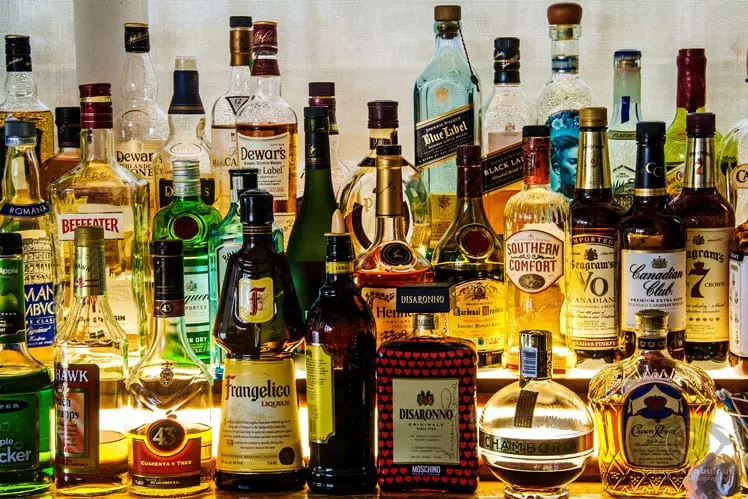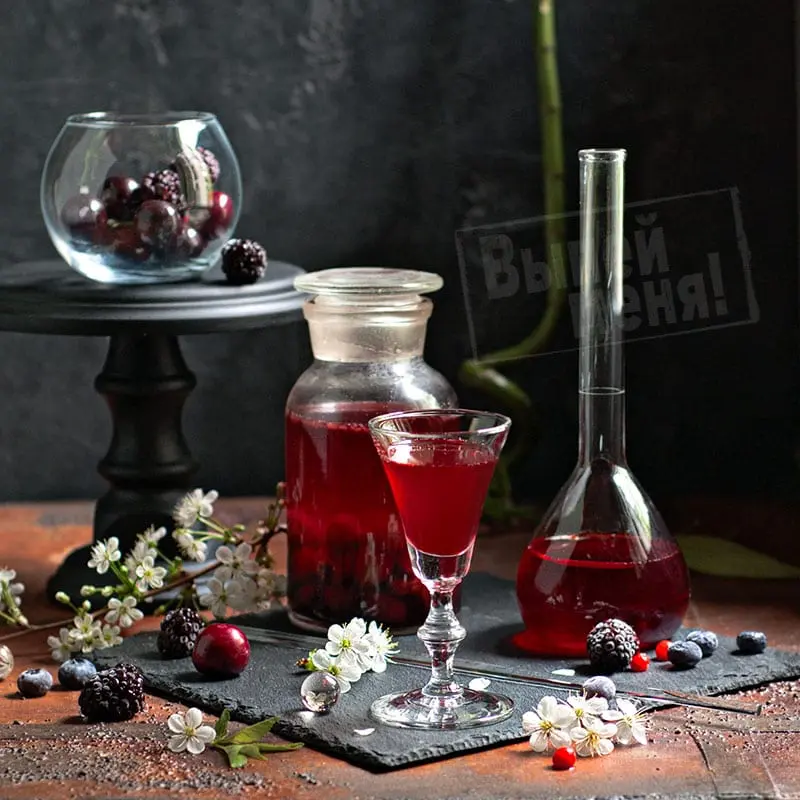Contents
Description
Liquor (lat. liguefacere – to dissolve), a sweet, alcoholic drink infused with fruits, berries, herbs, and spices. Its strength ranges from 16 to about 50.
Time, when appeared of the first liquor, no one knows. But due to the common belief – the prototype of the modern liqueurs became “Elixir Benedictine,” created in the 16th-century by monk Bernardo Vincelli in the city of Fecamp. This liqueur many monks and manufacturers of alcoholic drinks tried to repeat or improve. The result each time was a new, equally delicious, type of liquor. The liquor’s taste was very gentle at that time and therefore was considered a drink for aristocrats.

How to make Liquor
There is a great set of technologies for the production of liqueurs. Each manufacturer keeps it secret. But the main stages inherent in each production.
Stage 1: The infusion of the main plant components of the liqueur alcohol-water based or brandy for several months.
Stage 2: Filtration and separation of the beverage from fruit and citrus components.
Step 3: Making syrup and mixing it with an alcohol base. Depending on the desired final content of sugar, all the time, regulate its quantity so as not to spoil the liqueur with excessive sweetness.
Stage 4: After sweetening, the liquor settles, and heavy fractions settle to the bottom. Then they filter the drink and re-bottle it.
The finished liqueur in bottles has not a big shelf life of about a year. Then it begins to lose its color, may receive some bitterness.
Liqueurs divides into:
- strong (35-45 vol.) The sugar content in them varies from 32 to 50%. These include the famous liqueurs like Benedictine and Chartreuse.
- Dessert (about 25-30 vol) Is prepared solely based on fruit, berries, and tropical plants. Have a very sweet or sour-sweet taste. Submitted by liqueur based on apricot, plum, peach, lemon, sea buckthorn, black currant, and a mix of citrus.
- liqueurs-creams (16-23 vol.) Contain from 49% to 60% sugar. Often, to achieve a cream-like consistency and milky color, manufacturers add low-fat cream. The most popular are Advocaat, Cream, Country Lane, O’casey’s Cream, Baileys.
Very widely used liqueurs in the manufacture of confectionery products and various kinds of alcoholic drinks.

The benefits of liquor
Medicinal properties have only natural liqueurs. The liquor from the mixture of artificial food coloring and flavors won’t benefit, so spirits’ choice of spirits very carefully.
Practically all liqueurs are the perfect remedy for colds. People add them into the tea (2 tsp.) and use it when cold or the disease’s first symptoms. An excellent effect on the immune system has lemon, honey, and mint liqueurs.
To prevent diseases of the upper respiratory tract, it is good to use liqueurs in the bath. Pouring a liqueur glass (except chocolate, coffee, and egg) on hot stones, the air in the sauna room filled with beneficial essential oils. It has the effect of increase the production of the hormone endorphin, resulting in improved mood. There is a rush of strength and vigor.
A small dose of liqueur in the daily diet may reduce the size of fatty plaques on the walls of blood vessels, reduce cholesterol in the blood, and increase salt deposits in the joints.
Benefits depend on the type.
The useful properties of liqueurs are dependent on their main component.
Pear liqueur contains vitamin C, folic acid, and potassium that contribute to the blood.
Raspberry liqueur is rich in organic acids, vitamin C, carotene, phenolic compounds. Use (2 tsp. for medium Cup) brewed with a collection of herbs of Linden, peppermint, thyme, yarrow, and Hypericum to lower the temperature and as a diaphoretic for colds and hypothermia. In case of stomatitis and sore throat, rinse with a warm solution of raspberry liqueur (1-2 tbsp) cups of water.

Banana liqueur rich in vitamin B6 and iron, which increase hemoglobin level in the blood. It will help if you drink it with tea in the morning and the evening before bed 30 g in pure form.
Apricot liqueur contains vitamins B1, B2, B15, carotene, folic acid, potassium, iron, manganese, cobalt. This set of nutrients has a beneficial effect on the cardiovascular system, with hypertension, excessive excitability of the nervous system, and anemia. It is best to drink it diluted in a mineral water glass (3 tsp liqueur) with honey (1 tsp).
The dangers of liquor and contraindications
Excessive consumption of liquor can lead to alcohol dependence and the development of cancer tumors.
Also, it is contraindicated in people who are overweight or people seeking to lose weight because the liqueur is a very high-calorie product.
Do not take liquor, which is causing your allergies.
It is forbidden to take liquors to children under 18 years of age and pregnant and nursing mothers.
How and with what you should serve the liquor
This aromatic drink is best to serve at the end of the meal. Often a cup of black coffee accompanies the liquor. You may also drink it in its pure form; small glasses with a volume of 25-40 ml are intended for serving. It is customary to drink the beverage slowly, in tiny sips, enjoying the aroma and sweetness. You can add a couple of ice cubes to the shot glass. Liqueur goes well with desserts, ice cream, fruits, and berries.
The liqueur is widely popular in the preparation of alcoholic cocktails and an additive to spirits – vodka, cognac, whiskey. When served, the liquor must be of room temperature.
The selection of liqueurs is so wide that everyone can choose a drink to their liking. And cocktails based on liqueur will satisfy the most fastidious gourmet.
Useful and dangerous properties of other beverages:









